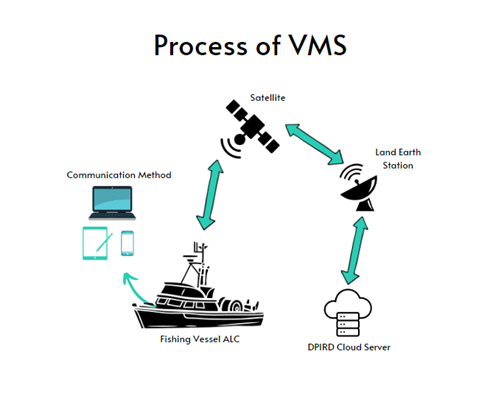One of the most important regulatory compliance
tools for fisheries management worldwide is a Vessel Monitoring System (VMS).
The use of VMS in the majority of Western
Australia’s commercial fisheries allows the Department of Primary Industries
and Regional Development to carry out real-time monitoring of commercial
fishing fleets. This helps to ensure fishers are complying with management
arrangements i.e. operating within their designated fishing areas and/or within
their entitlement allocations.
Vessels operating within a VMS managed fishery are
fitted with a device known as an automatic location communicator (ALC). The ALC
is used to monitor the activity of vessels by transmitting reports containing
information such as the geographical location, course and speed of the vessel. ALCs
can also be used to facilitate two-way communication between the vessel
operator and DPIRD.
The Department of Primary Industries and Regional
Development’s VMS is comprised of specialised software designed to receive, analyse,
and display position reports and messaging. This information is transmitted via
ALC for access by specialist Vessel Monitoring
Officers at our Operations Centre. Below is a basic diagram
showing how the VMS system works.

Data from the VMS is used to:
- Compliance monitoring of fishing zones;
- Compliance monitoring of spatial, temporal or seasonal closures;
- Compliance monitoring of entitlement allocations;
- Incident detection;
- Intelligence and evidence provision for investigations;
- Fisheries research and management; and
- Providing assistance to Maritime Safety and Sea Search and Rescue organisations.
Before you start fishing commercially it is essential to familiarise yourself with the legislation for the relevant fishery you will be operating in, as well as the VMS requirements for that fishery, in order to avoid any unnecessary incidents or penalties.
Please note the VMS is not a safety device; ensure you have all the correct safety measures in place as per your federal and state requirements.
In VMS-monitored fisheries, the correct process for installing and using an ALC must be followed.
Assistance Program
The first stage of the Electronic and Vessel Monitoring Assistance Program is now open. Please submit this form to apply for the rebate.
The rebate available is up to $2,200 for the purchase of the new ALC and $2,000 towards installation costs. Please review all the terms and conditions in detail. You must provide evidence that you have operated in an Applicable Fishery, and receipts for the purchase and installation of your new CLS Triton Advanced unit.
If you have any queries, please email reimbursements@dpird.wa.gov.au
Contact us
For further information, please contact VMS at (08) 6163 0903 or email vms@dpird.wa.gov.au